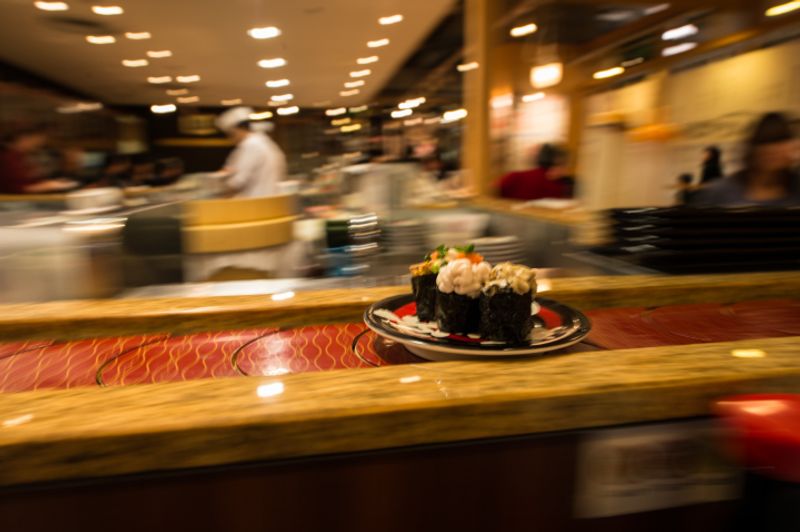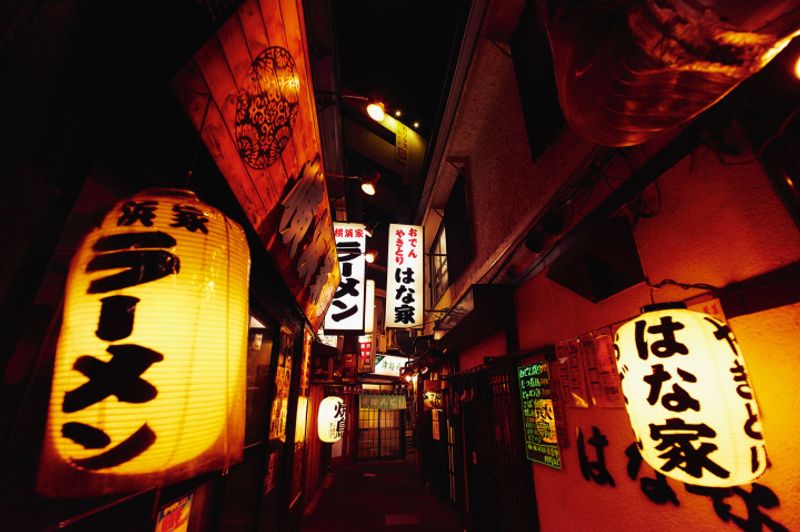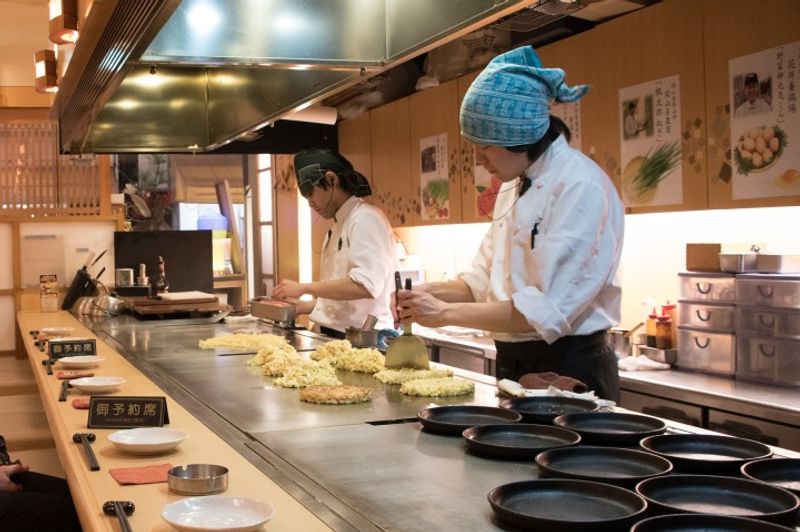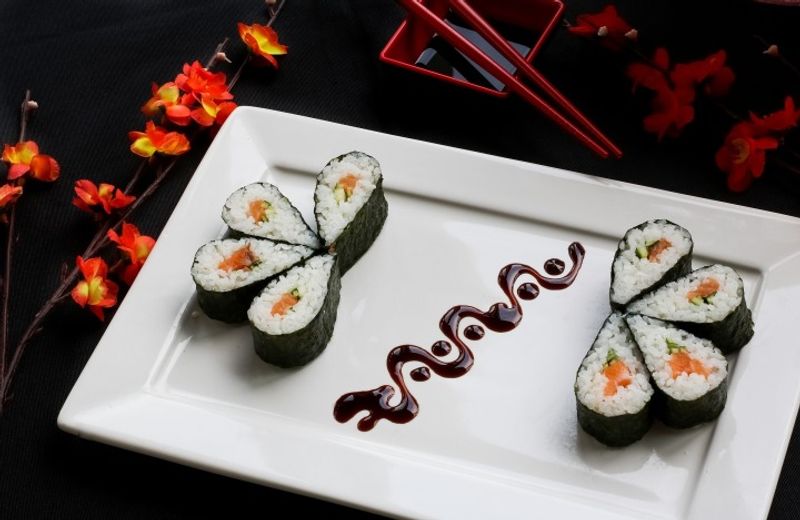Jul 23, 2017
How much does it cost to eat out in Japan?
Or what can you eat for what kind of price? The options for eating out in Japan are myriad, both in terms of how much it costs and what's on offer. From a down and out tachigui joint (eating while standing) through to some of the finest cuisine on earth served in a suitably lavish setting the eating out experience in Japan surely has something for all tastes and budgets. Yes, that's right - budgets.
OK, so Japan perhaps can't compare to backpacker Bangkok but if you've made it this far there should be no need for going hungry. Despite the rumors and the annual lists published in money magazines Japan, at least in terms of getting fed, isn't half as expensive as you might expect. How much does it cost to eat out in Japan then? This is a broad question requiring of a considered approach to get the most out of it.
We thought about breaking things down into "restaurant" type but then we (and you) could be here all day there are that many in Japan. Instead we'll break it down by cost, or budget - What you can get for how much? In this way we hope to get straight to the crux of the matter - How much will it cost me?

Rock bottom: 500 yen or less
How can you eat out in Japan for less than 500 yen in Japan? Arguably the best value for money can be found in the phrase, "one coin". Yes, there is a 500 yen coin in Japan (it's the biggest one). Entrepreneurial restaurateurs have latched onto this and now offer (typically) lunches for "one coin" or indeed, the "one coin lunch". Of course, you could pay with five 100 yen coins or any other combination that covers the required 500 yen (it's just that the expenditure of a single coin makes things sound cheaper). "One coin' lunches in Japan are typically the preserve of the nation's office workers so for your best chance of finding one, head to office districts of cities on weekdays. Servings are usually a main of pasta / omurice / meat and rice, and a side of soup and / or salad.
Japanese style fast food - 500 yen will usually get you the signature dish in Japan's fast food restaurants, typically counter style eating where orders are made with the purchase of a ticket from a machine by the entrance. The most common dish in this genre is gyudon (牛丼) - a bowl of rice topped with sliced beef and onion. The more generic donburi (丼) covers a bowl of rice topped with meat/fish/veg. Other choices include tendon (天丼).
Japanese fast food restaurants to look out for ...
For 500 yen or less the dish will likely have to be a regular. This "fast food" option would be more suitable for lunch as you'll struggle to get bellies filled here for dinner. Still, if needs must ...
Western style fast food - In Japan you can usually pick up a signature burger from the established fast food chains for less than 500 yen. MacDonald's, Burger King, Wendy's First Kitchen are all included in this. Ordering a set, will take you beyond 500 yen.
500 yen can also handle signature burgers at the Japanese chains. Think Mos Burger and Freshness Burger. As with their Western counterparts, set menus will require more than just a single coin.
Ramen - At a squeeze you will be able to find ramen sold in restaurants in Japan for around 300 yen. Most likely this will be from independent restaurants rather than chain operations. For the Western palate, ramen might well be the cheapest way to fill up in Japan as the volume of your average bowl carries considerable clout. Still, some chains have dishes for less than 500 yen. Look out for the following: ...
Standing while eating - It's not always the case but in those restaurants (if we can call them that) where customers are not afforded the privilege of sitting down, one might be able to get fed for less than 500 yen. In actually fact, the chances are that these standing-room-only places will be serving the dishes mentioned above - ramen, gyudon and donburi. The easiest place to spot them will be in and around trains stations.
Festival food - Is festival food to be considered eating out? Technically one would have thought so. During the warmer months in Japan in particular, festivals are a regular occurrence and they always come with salt-of-the-earth grub - think yakisoba, fish on sticks, okonomiyaki, takoyaki and yakitori, all of which have the potential to fill. You should be able to do pretty well here for 500 yen or less. In Japan's bigger, more vibrant parks, stalls selling this kind of "festival food" might maintain a presence even in the absence of any festival.

Eating out in Japan on a budget: 501 - 1,000 yen
The first thing to say about eating out in Japan at this kind of range is that you'll be able to get set menus in almost all fast food restaurants, be this McDonald's (Big Mac set - 680 yen), Burger King (Whopper potato set - 880 yen) or through to Tenya (Set meal (tempura / rice / miso soup / pickles - 680 yen). It will also move you into "large" territory in the Japanese fast food joints we mentioned above.
How about the cost of ramen? For up to 1,000 yen you can comfortably eat in Japan's ramen chains, and this includes the famous tonkotsu ramen served at Ichiran. In fact almost all ramen in Japan costs within 1,000 yen for a bowl.
Family restaurants - While you can get away with paying less than 500 yen at Japan's storied family restaurants, you'll really just be in "very light meal" territory. For up to 1,000 yen though, you can get a passable meal.
Saizeriya and Gusto are among the cheapest of Japan's family restaurants. Here mains come in at around 500 yen (pizzas, pastas, hambaagu), salads at around 300 yen and 100 - 200 yen for other sides. All-you-can-drink "drink bars" around 200 yen. When this expat first arrived in Japan the Saizeriya combo of focaccia (120 yen), meat sauce doria (300 yen) and drink bar (200 yen) became something of a staple.
Coffee shops chains - You're struggling to get a coffee and a sandwich from one of the coffee chains in Japan for less than 500 yen. It might be possible if you scrimp on the coffee but really you need to be in the 501 - 1,000 yen bracket to get caffeinated as well as fed in these establishments.
Who's here; Starbucks, Tully's, Dotour, Veloce, are all easy to spot (unlike a seat in Starbucks).
Coffees in Japan's chains will typically be around 300 yen for something regular. Then it's a case of picking out a sandwich, muffin, fancy cookie, or a slice of cake which will take you beyond the 500 yen mark.
In fact, combinations of bread and coffee almost anywhere beyond a convenience store are going to tip 500 yen.
Sushi trains - Nobody goes into a 100 yen-a-plate (108 yen with tax) sushi train chain and comes out within five plates. However, plenty of people do so within 10 plates making these ubiquitous and much-loved sushi restaurants in Japan a good option for those people operating in this budget range. Your meal needn't be exclusively sushi - you could top things off with a cheap dessert for around 200 yen.
Cafes - You're now into "meal" territory in the nation's cafes. It would be impossible to list all the cafe options in Japan - they come in all shapes and sizes and in fact the range is quite staggering. That said, where Japan might be lacking is in the twee, lace table cloths, tea and scones variety of cafe. One could argue that Japan's version of these pre-war mainstays are actually dim and dusty cafes where smoking is more "assumed" rather than "permitted" and, for foreigners at least, are not always the most inviting looking places from the outside.
Lunch sets - More common than the "one coin" lunch, 1,000 yen could almost be considered the default setting for a good value lunch with main, soup and salad in Japan. It's unlikely to include a drink but then the water in Japan really is "on tap" so to speak and will be poured without hesitation (if it hasn't been already). Maybe this is a bit myopic of us, but again the 1,000 yen lunch seems especially popular with office workers so heading to business districts could turn up rich pickings. Don't expect to come out feeling stuffed, though.
Generic "cheap" restaurant in Japan - Yes, we realize that this is a subheader that doesn't really satisfy. What we want to put across here though is that for up to 1,000 yen you are in the "cheap meal" zone and while the establishments listed above are most likely the easiest places to find in Japan, anywhere that can get bellies filled to satisfaction for 1,000 yen or less, should be considered good value.

Mid-range eating out budget: 1,001 - 3,000 yen
Aside from being able to eat yourself sick at a cheap sushi chain, the most obvious thing to say for this kind of cost of eating out range is "department store". The upper floors of a department store in Japan provide the path of least resistance if struggling for ideas on where to go for a "nice" meal. The thought process may be lacking in creativity but these restaurants are always a safe bet. Restaurants here typically reflect the department store so, say, a Marui (OIOI) or a Parco isn't going to host the kind of fine-dining you might expect in Ginza Six. In fact, Ginza Six is going to be out of our price range for now.
Food served at department store restaurants in Japan tends to be either very Japanese or very Japanese restaurant trying to be Western (or sometimes Indian). Either way, the cost of eating out at the lower end should be less than 1,500 yen.
When it comes to eating in department store restaurants, the easiest way to make the bill more costly than it need be is to buy drinks. Sometimes drinks in Japan can be as much as half (if not more) the cost of a main dish. So, downing a couple of cokes during a meal could really see prices soar.
If money is a little tight, stick to water. The following can't be stressed enough - unlike some nations where ordering a glass of tap water runs the risk of staff doing something unhygienic to your food, doing so in Japan is expected no matter how busy wait staff might seem. In fact, in many cases tap water is served without even asking for it.
Yakiniku - You can't hold back on yakiniku, to scrimp and scrape in this field of eating is to miss the point entirely - yakiniku is about indulgence, but of a salt-of-the-earth kind. For less than 3,000 yen you should be able to come out of an unflashy yakiniku joint stuffed with meat, rice, and one or two beers.
We've used yakiniku as it's a personal favorite, but the same could also be said of shabu shabu and for 1,000 - 3,000 yen we're also in range to get comfortably stuffed on Japan's other DIY dining options like okonomiyaki and monjayaki.
Booze and food, food and booze - If you've got up to 3,000 yen to spare you can have a good, robust, evening out with food and booze at an izakaya. Here beers typically start at around 300 yen and small dishes of food to be shared (a bit like tapas), again, start from around 300 - 400 yen. Personal experience has taught me that over the course of 2 - 3 hours of eating and drinking with friends at a pace that is comfortable for me, I end up spending around 2,000 - 3,000 yen. Quality and price range of izakaya vary to some degree. I consider the costs above as low to mid range.
Buffet - Music to the ears of the serious eater no doubt, but we have now entered the "buffet" zone in Japan. For less than 3,000 yen however, how much one can expect in terms of quality is a little hit and miss. Certainly, in Tokyo something a bit classy will cost more than this. Still, at this kind of budget and cost you could be getting stuffed with a combination of Japanese and Western food in pleasant surrounds over the course of around two hours (or maybe 90 mins). Actually, we should probably be careful about that middle bit. At times, the buffet can be inexplicably popular in Japan and the site of lines at the bar and all those people stuffing their faces isn't always the most appealing. But then this is a buffet - the combination of a time limit on an all-you-can situation is never going to lead to the finest displays of the human condition.
At this kind of range, be on the lookout for restaurants that do nothing but "buffet" (a little hard to find - try a huge shopping mall) or mid-range hotels.
Pub food - At the lower end of this budget for going out to eat in Japan you'll be able to get a main dish and a pint at one of Japan's British or Irish pubs. Hub British Pub is the obvious, if a little lazy, choice here (but the easiest to find). 1,500 yen could get you a plate of fish and chips and a pint of Hub Ale.
Pints at these places are typically around 800 yen so just two or three of these isn't going to leave much for food at this kind of budget range.
Posher sushi - You'll need to be in this kind of budget range to fill up on good quality sushi in Japan. Actually, this expat can't tell the difference between good quality sushi and that which is sold in the sushi train chains. The Japanese, however, swear by the difference and if you want to partake, this is where you need to be in terms of cost outlay. Don't get too carried away with yourself though, we're not into "finest quality" yet.
For little over 1,000 yen you can start to make the best of sushi chain restaurants like すしざんまい (Sushizanmai), arguably the most famous sushi restaurant in Japan.
Afternoon tea - Japanese people think of upper-class Brits that come mid afternoon they drop whatever it is they are doing to go and sit at a table decorated with flowers and frills and sup milky tea out of fine china while nibbling on scones and other petite cakes and sweets. So it is then, that based on this dated image of posh Blighty the "afternoon tea" is something that you can pay for in Japan, particularly at posh hotels. It's not a full on meal, hence it can be slipped into this kind of budget.
Generic mid-range restaurant in Japan - 1,000 - 3,000 yen is actually quite broad as a budget for eating out. Maybe too broad. Where up to 1,500 yen might be considered cheap(ish) by some, up to 3,000 yen will be considered very expensive particularly if on a single meal. We've set this range, however, to cover both mid-range meals and, to a certain degree, mid-range drinking experiences (hence the izakaya mention), and mid-range buffets. Anyway, if you're in the 1,000 - 3,000 yen budget zone you can get pretty well stuffed in Japan.

Dreams of fine dining in Japan: 5,000 yen
In all practical purposes, 5,000 yen covers the cost for lower-end fine dining in Japan. Beyond this you can go into silly amounts of money on dishes and courses aimed at the kind of people who don't have to worry about how much things cost.
Unless you're going for pure quantity, you'll find options for spending this kind of money on a meal out drop significantly. Outside of a sizeable city in Japan, you may not be able to find anywhere within your reach that can serve food to this value. This is posh restaurant and hotel territory.
In this range you can start to enjoy the lunch buffets at a 5-star hotel. Not all of them, but certainly you'll have options, even in Tokyo. Dinner buffets may require 2,000 yen more.
Fine-dining (whatever that actually means) is, again, easiest to find in the restaurants of 5-star hotels. With 5,000 yen you might be forced to scrimp and scrape from the à la carte menu (if this is an option) but certainly, for a little more, you can get into the set courses. Dinner courses will be a struggle for 5,000 yen alone.
The sky's the limit: Beyond 10,000 yen
Going above 10,0000 yen and you can start getting into the dinner courses at the some of the finest restaurants in Japan. To choose maybe the most famous example, you can now enjoy a dinner course at New York Grill in the Park Hyatt Tokyo, the Shinjuku hotel restaurant made famous by Bill Murray in the Sofia Coppola directed "Lost in Translation".
Basically, 10,000 yen + starts serving up the finest, flashiest food in any setting in Japan. Emphasis on the "starts". The sky's the limit here with the cost of some dishes enough to make the eyes water (like the 30,000 yen "tasting" menu U.S. President Obama and Japanese Prime Minister Abe enjoyed at the uber famous Sukiyabashi Jiro in Tokyo’s Ginza district).
Notes on how much it costs to eat out in Japan
We wonder if we've even scratched the surface with this look at the cost of eating out in Japan. Hopefully though it can serve as some sort of guide and perhaps assuage any fears about how expensive food might have appeared to be in Japan.
While credit cards and other forms of plastic payment are ever increasing in Japan it always pays to be ready with some cash. At many of the lower end options for eating out, cash will be the only option.
Related:
COST OF LIVING IN JAPAN in 2022, inflation & the weak yen:
We've probably missed out any number of options for eating out in Japan and how much it costs to do so. To this effect, please let is know your suggestions, tips, and cost experience in the comments.
For more content like this ...
How much does sushi in Japan cost?
How much does ramen in Japan cost?
Images:
Top - Takashi Hososhima Flickr License



0 Comments